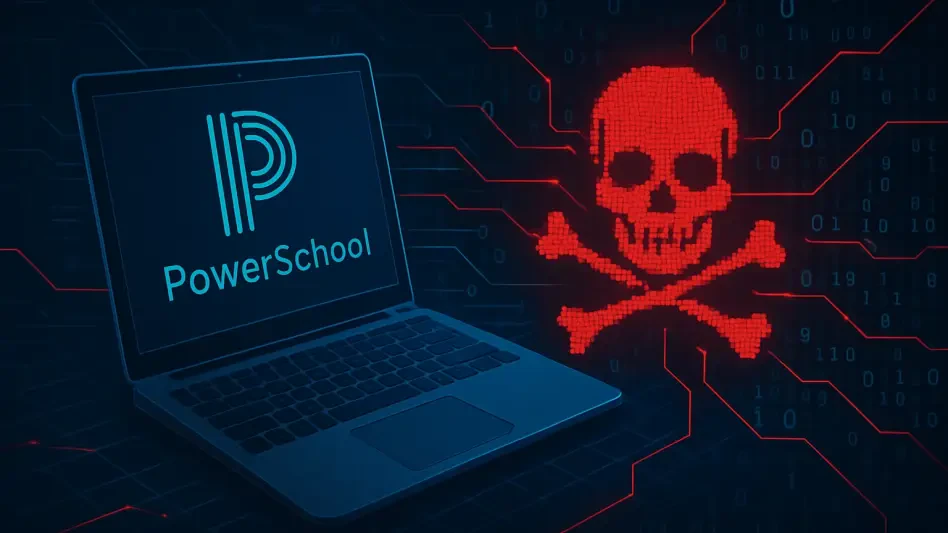In an era where artificial intelligence is transforming industries and reshaping workflows, a sinister cyberthreat known as EvilAI malware is exploiting this technological fascination to infiltrate organizations across the globe. This cunning campaign disguises itself as legitimate AI and productivity tools, luring users into downloading what appears to be helpful software, only to unleash devastating consequences behind the scenes. With its polished interfaces and deceptive tactics, EvilAI poses a formidable challenge to cybersecurity, blending seamlessly into trusted digital environments while secretly conducting malicious activities. The scale of this threat is staggering, as it targets diverse sectors and regions, capitalizing on the universal appeal of AI innovations. As businesses and individuals increasingly rely on such tools, understanding the mechanisms behind this malware becomes crucial to safeguarding sensitive data and systems from unseen dangers lurking within seemingly benign applications.
Understanding the EvilAI Threat Landscape
Global Reach and Targeted Industries
The reach of EvilAI malware is alarmingly extensive, spanning continents and infiltrating a wide array of industries with precision and intent, showcasing its dangerous potential. Sectors such as manufacturing, government, healthcare, technology, and retail have all fallen prey to this threat, with infections reported across Europe, the Americas, and the Asia, Middle East, and Africa region. Countries like India, the United States, France, Italy, Brazil, and Germany stand out as particularly affected, highlighting the campaign’s ability to adapt to diverse linguistic and cultural contexts. This global footprint underscores the malware’s sophisticated design, which enables it to exploit vulnerabilities in organizational structures regardless of location or industry focus. The targeting of such varied sectors suggests a deliberate strategy to maximize impact, disrupting critical operations and accessing valuable data on an unprecedented scale. For many businesses, the realization of an infection often comes too late, after significant damage has already been inflicted on their systems and reputations.
Beyond its geographic spread, EvilAI’s choice of targets reveals a calculated approach to exploiting trust in digital transformation, particularly in industries undergoing rapid adoption of AI technologies where employees and decision-makers are eager to integrate cutting-edge tools into their workflows. Applications masquerading as productivity enhancers, such as AppSuite or PDF Editor, appeal directly to this enthusiasm, embedding themselves into daily operations before revealing their true nature. The healthcare sector, for instance, faces unique risks as compromised systems could jeopardize patient data, while government entities grapple with potential breaches of national security. This malware’s ability to penetrate such critical areas demonstrates not only its technical prowess but also a deep understanding of human behavior and organizational priorities, making it a persistent threat to global stability and security in the digital age.
Deceptive Design and User Trust
EvilAI malware’s success hinges on its ability to blur the lines between legitimate software and malicious intent, leveraging design elements that inspire unwarranted trust. At first glance, applications such as Epi Browser, JustAskJacky, and Recipe Lister appear polished and professional, complete with user-friendly interfaces that mimic those of reputable tools. This deliberate crafting ensures that even cautious users are unlikely to suspect foul play, as the software often delivers on its promised functionality while covertly executing harmful tasks. The use of valid digital signatures, often issued by short-lived or disposable companies, further enhances this illusion of authenticity, bypassing initial security scans that might otherwise flag suspicious activity. Such deception preys on the inherent trust users place in professionally presented applications, turning a strength of digital ecosystems into a critical vulnerability.
Moreover, the psychological manipulation at play extends beyond mere aesthetics to exploit the current fascination with AI and productivity solutions. Threat actors behind EvilAI capitalize on the hype surrounding emerging technologies, embedding buzzwords and promises of efficiency into their bait to attract downloads from curious or efficiency-seeking individuals. This tactic is particularly effective in corporate environments where the pressure to innovate can override caution, leading to widespread adoption of unverified tools. Once installed, the malware operates under the radar, often evading detection by blending seamlessly with routine system processes. The result is a silent infiltration that compromises sensitive information while users remain oblivious, interacting with what they believe to be a benign application. This sophisticated interplay of design and deception marks EvilAI as a uniquely dangerous adversary in the cybersecurity landscape.
Propagation and Infection Strategies
Sophisticated Distribution Tactics
The propagation of EvilAI malware relies on a multi-pronged approach that exploits digital channels with alarming effectiveness to ensnare unsuspecting users, capitalizing on their trust in familiar online spaces. Threat actors create newly registered websites that mimic legitimate vendor portals, complete with professional branding to lower suspicion. Alongside these deceptive sites, malicious advertisements and manipulated search engine optimization tactics push infected downloads to the top of search results. Social media platforms and forums further amplify the spread, as promoted links and discussions around AI tools draw in curious individuals eager to test the latest innovations. By leveraging the allure of buzzwords like “AI-enhanced,” these distribution methods ensure a steady stream of victims, transforming routine online behavior into a gateway for infection across personal and corporate environments.
Equally concerning is how EvilAI tailors its distribution to exploit specific user demographics and behaviors, ensuring maximum reach. For instance, campaigns targeting professionals often promote tools like Manual Finder or OneStart, promising streamlined workflows that appeal to busy employees under pressure to perform. Meanwhile, casual users might encounter apps like Tampered Chef through lifestyle-oriented ads or forum recommendations, blending seamlessly into everyday digital interactions. This strategic diversity in delivery mechanisms reflects a deep understanding of how different audiences engage with technology, allowing the malware to infiltrate varied ecosystems with ease. The result is a pervasive threat that thrives on the interconnected nature of modern digital life, turning curiosity and trust into tools for widespread compromise and highlighting the urgent need for vigilance in online interactions.
Post-Infection Behavior
Once EvilAI malware gains a foothold in a system, its behavior shifts to ensure long-term access and minimal detection, posing a severe risk to compromised environments. Acting as a stager, it establishes persistence by embedding itself into system processes, making removal a daunting task even for seasoned IT professionals. The malware meticulously identifies installed security software, adapting its actions to evade common detection methods and maintain its covert presence. This ability to sidestep traditional defenses allows it to operate unnoticed, often for extended periods, as it prepares the ground for more destructive payloads or additional malicious components. Such stealthy persistence transforms infected systems into ticking time bombs, ready to unleash further harm at the attackers’ command while users remain unaware of the lurking danger within their devices.
Another critical aspect of EvilAI’s post-infection strategy lies in its use of encrypted communication channels to interact with command-and-control servers in real time, ensuring that its activities remain undetected. Utilizing advanced encryption like AES, the malware ensures that its exchanges with attackers remain hidden from network monitoring tools, facilitating the secure transmission of stolen data and receipt of new instructions. This encrypted lifeline enables threat actors to dynamically adjust their tactics, deploying updates or escalating attacks based on the evolving situation. Additionally, EvilAI conducts extensive reconnaissance, extracting sensitive browser data that could include login credentials and personal information, amplifying the potential for identity theft or corporate espionage. The combination of persistence, stealth, and real-time adaptability makes this malware a formidable challenge, underscoring the importance of advanced threat detection to interrupt its destructive cycle before irreparable damage occurs.
Variants and Infrastructure Complexity
Diverse Malware Strains
The EvilAI campaign encompasses a range of variants, each with distinct objectives yet united under a shared umbrella of deception and malice. BaoLoader, for instance, functions primarily as a backdoor, granting attackers the ability to execute arbitrary commands on infected systems with a focus on advertising fraud. This variant often operates by installing unauthorized browser extensions or residential proxies, exploiting user systems for profit without explicit consent. Its role as an affiliate distributor for seemingly legitimate software adds a layer of complexity, as it intertwines malicious intent with functional outputs that mask its true purpose. Such dual behavior ensures that victims remain unaware of the compromise, allowing BaoLoader to maintain a prolonged presence while generating revenue for its operators through illicit means, posing a unique challenge to detection efforts.
In contrast, Tampered Chef emerges as a variant tailored for stealthy data exfiltration, often disguised as a harmless recipe application that appeals to casual users. Beneath its benign exterior, it establishes covert communication channels to siphon off sensitive information, targeting personal and corporate data with precision. Unlike BaoLoader’s focus on ad fraud, Tampered Chef prioritizes the theft of credentials and other critical assets, setting the stage for long-term exploitation or secondary attacks. The distinct behavioral patterns of these strains highlight the modular nature of the EvilAI ecosystem, where different components serve specialized roles yet contribute to a broader strategy of infiltration and damage. This diversity necessitates a nuanced approach to defense, as tackling one variant may not address the threats posed by others, requiring security teams to adapt to an ever-shifting landscape of malicious innovation.
Shared and Distinct Networks
A deeper look into EvilAI’s infrastructure reveals a complex web of shared and distinct networks that underpin its various strains, pointing to a coordinated yet fragmented operation. Analysis shows overlapping server setups among variants like OneStart, Manual Finder, and AppSuite, suggesting a centralized effort by the same threat actors to streamline certain aspects of deployment and control. This shared infrastructure facilitates efficient communication and data handling, allowing the malware to scale its impact across multiple targets with minimal operational overhead. However, the consistency in certain elements, such as recurring server IPs or domain patterns, provides a potential avenue for defenders to trace and disrupt these operations if identified early. The interconnected nature of these systems underscores the importance of collaborative intelligence-sharing among cybersecurity entities to map and dismantle the broader network before it evolves further.
Despite these commonalities, distinct patterns in code-signing certificates hint at variations in development or distribution channels within the EvilAI campaign. For instance, BaoLoader frequently uses certificates issued from regions like Panama and Malaysia, while Tampered Chef relies on credentials from Ukraine and Great Britain, indicating possible separation in the teams or resources behind each strain. These differences could reflect a malware-as-a-service model, where different groups access shared tools or marketplaces for code-signing to execute their specific agendas. Such fragmentation adds a layer of resilience to the campaign, as disrupting one network may not impact others, allowing the threat to persist through alternate pathways. Understanding these nuances is critical for crafting targeted countermeasures that address both the unified and disparate elements of EvilAI’s infrastructure, ensuring a comprehensive defense against its multifaceted approach.
Evolving Tactics and Challenges
Rapid Adaptation to Exposure
EvilAI’s ability to adapt swiftly to exposure sets it apart as a particularly resilient cyberthreat, frustrating efforts to contain its spread. When applications like AppSuite PDF Editor are flagged as malicious by cybersecurity researchers, threat actors respond almost immediately by releasing “clean” versions—such as updates 1.0.40 and 1.0.41—that strip out overt data-stealing features while still maintaining connections to attacker-controlled infrastructure. This calculated pivot ensures the malware retains a foothold in compromised systems, even as public awareness grows. Such responsiveness demonstrates a high level of planning and resourcefulness, allowing the campaign to stay one step ahead of traditional defensive measures. The rapid deployment of these sanitized updates highlights the need for real-time monitoring and proactive threat hunting to catch these shifts before they re-establish the malware’s covert operations.
Further illustrating this adaptability, EvilAI operators often abandon exposed applications entirely in favor of new decoy tools like S3-Forge, which are already under active development to replace older, compromised versions. This strategic shift not only minimizes disruption to their activities but also exploits the lag time between detection and widespread defensive updates, ensuring continued infections. The constant evolution of decoy apps reflects a deep understanding of the cybersecurity response cycle, as attackers exploit windows of vulnerability while organizations scramble to update protections. S3-Forge, for example, shows signs of refinement aimed at enhancing stealth and effectiveness, signaling an ongoing commitment to innovation in malicious design. Combating this relentless adaptation requires dynamic security protocols that anticipate such pivots, emphasizing the importance of predictive analytics and rapid patch deployment to close gaps before new variants take root.
Advanced Evasion Techniques
The technical sophistication of EvilAI extends to its use of advanced evasion techniques that challenge even the most robust security systems, making it a formidable threat in the cybersecurity landscape. By leveraging frameworks like NeutralinoJS, the malware can execute arbitrary JavaScript code, enabling covert access to file systems and process spawning without triggering alerts. These methods bypass string-based detection and signature-matching tools, rendering many traditional endpoint defenses ineffective against its stealthy operations. Additionally, the use of Unicode homoglyphs to encode payloads within benign-looking API responses further obscures malicious activity, making it difficult for analysts to distinguish harmful code from legitimate traffic. This layered approach to evasion ensures that EvilAI can operate undetected for extended periods, quietly compromising systems while security teams struggle to identify the threat.
Compounding the challenge, EvilAI’s ability to adapt its communication and payload delivery mechanisms keeps it ahead of evolving detection strategies, making it a persistent threat to cybersecurity. Encrypted channels, often using AES, shield interactions with command-and-control servers from network monitoring, ensuring that attackers can issue commands and extract data without interference. The malware also employs tactics to hinder forensic analysis, such as obfuscating critical components or dynamically altering its behavior based on the presence of security software. These techniques collectively create a moving target for defenders, as static signatures or behavioral patterns become obsolete almost as soon as they are identified. Addressing this level of sophistication demands a shift toward behavior-based detection and machine learning-driven analysis, which can identify anomalies even in the absence of known threat indicators, providing a more resilient barrier against such elusive malware.
Broader Impact on Cybersecurity
Risks to Users and Organizations
The ramifications of EvilAI malware extend far beyond initial infection, posing severe risks to both individual users and large organizations with lasting consequences that can devastate personal and professional lives. One of the most immediate dangers is the compromise of browser-stored credentials, as the malware systematically extracts sensitive information like login details and personal data. For individuals, this can lead to identity theft and financial loss, while corporations face the specter of data breaches that expose proprietary information or client records. The healthcare sector, for instance, risks patient privacy violations, while government entities could suffer leaks of classified material, amplifying the stakes of each infection. Such breaches erode trust and can trigger regulatory penalties, compounding the damage with legal and reputational fallout that lingers long after the malware is removed from affected systems.
Equally alarming is EvilAI’s focus on persistence, which primes infected systems for future, more destructive attacks that may not manifest immediately. By establishing long-term access, the malware creates backdoors that attackers can exploit at opportune moments, potentially deploying ransomware or other payloads to maximize harm. This latent threat means that even systems believed to be clean may harbor hidden vulnerabilities, waiting to be triggered during critical operations or peak business periods. The financial and operational disruptions from such delayed attacks can be catastrophic, particularly for industries reliant on uptime and data integrity. Mitigating these risks requires not only immediate remediation but also ongoing vigilance to detect dormant threats, alongside robust backup strategies to minimize the impact of potential escalations in the attack chain.
Shaping Future Defenses
Looking back, the EvilAI malware campaign served as a critical wake-up call for the cybersecurity community, exposing the vulnerabilities inherent in trusting digital tools at face value. Its sophisticated blend of deception, adaptability, and technical evasion underscored how traditional defenses often fell short against modern threats. Reflecting on this challenge, it became evident that a reactive stance was insufficient; the campaign’s rapid pivots and stealthy operations demanded a fundamental shift in approach. Defenders recognized the need for proactive measures, such as advanced threat intelligence and behavior-based detection, to counter the malware’s ability to evolve under pressure. This realization drove significant advancements in how security solutions were designed and deployed to address such dynamic adversaries.
Moving forward, the lessons from EvilAI’s impact pointed to actionable strategies that could fortify global defenses against similar threats, emphasizing the need for robust and proactive measures. Investing in user education emerged as a cornerstone, ensuring individuals and employees could identify suspicious software before it infiltrated systems. Simultaneously, adopting multi-layered security architectures—combining endpoint protection, network monitoring, and real-time analytics—offered a more comprehensive shield against deceptive malware. Collaboration among cybersecurity firms also proved vital, as shared intelligence helped map out EvilAI’s infrastructure for faster disruption. By prioritizing predictive tools and fostering a culture of skepticism toward unverified applications, the industry aimed to stay ahead of evolving tactics, turning past encounters with this pervasive threat into a blueprint for resilience and innovation in safeguarding the digital landscape.





